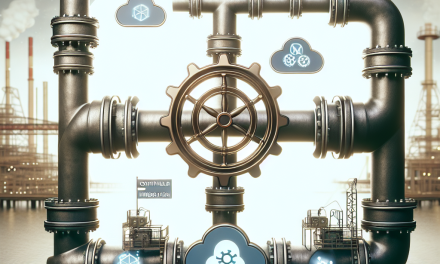In today’s cloud-native world, Kubernetes has emerged as a powerhouse for container orchestration, enabling organizations to automate the deployment, scaling, and management of applications. However, with great power comes great complexity. As your applications scale, performance bottlenecks can become troublesome, making it essential to have effective strategies for monitoring and troubleshooting. One of the most powerful tools at your disposal is trace analysis.
Understanding Trace Analysis
Trace analysis involves capturing and analyzing the execution paths of requests as they move through your distributed systems. By observing these paths, you can identify latencies, bottlenecks, and areas of inefficiency that hinder application performance. In a Kubernetes context, this means tracking requests across microservices running in different containers and clusters.
Why Trace Analysis is Crucial for Kubernetes
-
Microservices Complexity: Kubernetes often runs microservices architectures. As components communicate across service boundaries, understanding interactions and performance is crucial.
-
Dynamic Scaling: Kubernetes allows for dynamic scaling of services, but this can introduce variability in performance. Trace analysis can help you pinpoint when and where scaling issues arise.
-
Fault Isolation: When dealing with complex, distributed systems, understanding how to isolate faults is essential. Trace data can show you which services are affected when an anomaly occurs.
- Performance Optimization: Identifying which service is causing delays can help teams optimize performance, leading to better user experiences and more efficient resource utilization.
Implementing Trace Analysis in Kubernetes
1. Instrumentation
The first step in any trace analysis process is instrumentation. This involves adding tracing code to your services. Popular libraries for instrumentation include:
- OpenTelemetry: A set of APIs, SDKs, and tools that allow you to collect telemetry data from applications.
- Jaeger: A distributed tracing system that can help trace the paths of requests through microservices.
While Kubernetes doesn’t have built-in tracing features, these open-source tools can be easily integrated with your applications to capture trace data.
2. Data Collection
Once instrumentation is in place, the next step is to collect trace data. This involves sending trace information to a central location where it can be analyzed. Most organizations leverage tools like:
- Prometheus: An open-source alerting toolkit that, while primarily used for monitoring metrics, can work alongside tracing tools to provide a more nuanced view of your application’s performance.
- Elasticsearch, Fluentd, and Kibana (EFK): This stack can be used to collect, store, and visualize logs and trace data, ensuring that all relevant information is in one place.
3. Trace Analysis
With trace data collected, the next step is to analyze it. Look for trends, patterns, and outliers that indicate performance issues. Key metrics to monitor include:
- Latency: The time it takes for a request to travel from one service to another.
- Error rates: Frequency of errors can help identify failing services.
- Throughput: The number of requests processed, which can reveal load-handling capabilities.
Tools like Jaeger and Zipkin can help visualize this data, making it easier to spot bottlenecks.
4. Monitoring and Alerting
Once you’ve deployed tracing and begun analyzing data, it’s essential to set up monitoring and alerting systems to catch performance issues proactively. Utilizing tools like Grafana for visualization, combined with Prometheus for alerting, can keep your team informed of any potential problems before they escalate.
Common Performance Bottlenecks in Kubernetes
Here are some common sources of performance bottlenecks that can be detected via trace analysis:
- Service Dependencies: Delay in one service can cascade to others, so understanding service interactions is key.
- Resource Limits: Misconfigured resource requests and limits can lead to resource starvation and impact service performance.
- Network Latency: Bottlenecks can arise from inefficient network routing, so it’s essential to analyze the network path.
- Database Performance: Often, the bottleneck can reside in your database interactions, so trace analysis should also extend to database queries.
Best Practices for Effective Trace Analysis
-
Consistent Context Propagation: Ensure that request context is consistently propagated through services to obtain complete traces.
-
Sampling Rate Management: Be mindful of sampling rates; higher sampling can provide more detail but may add overhead.
-
Identify Key Transactions: Focus on the transactions that matter most to your users, rather than trying to trace everything.
- Utilize Dashboards: Build efficient dashboards that provide team members with instant access to performance metrics and trace data.
Conclusion
As organizations increasingly transition to Kubernetes for container orchestration, understanding and resolving performance bottlenecks will become a vital skill. Trace analysis serves as a powerful, systematic method for diagnosing performance issues within complex microservices architectures. By implementing effective instrumentation, data collection, analysis, and monitoring, teams can unlock the full potential of their applications, ensuring smoother operations and enhanced user experiences.
At WafaTech, we believe that combining the power of Kubernetes with detailed trace analysis can pave the way for optimal application performance. Start tracing today, and transform bottlenecks into breakthroughs.
Feel free to customize specific aspects of the article according to WafaTech’s style, audience preferences, or additional insights you want to include!





